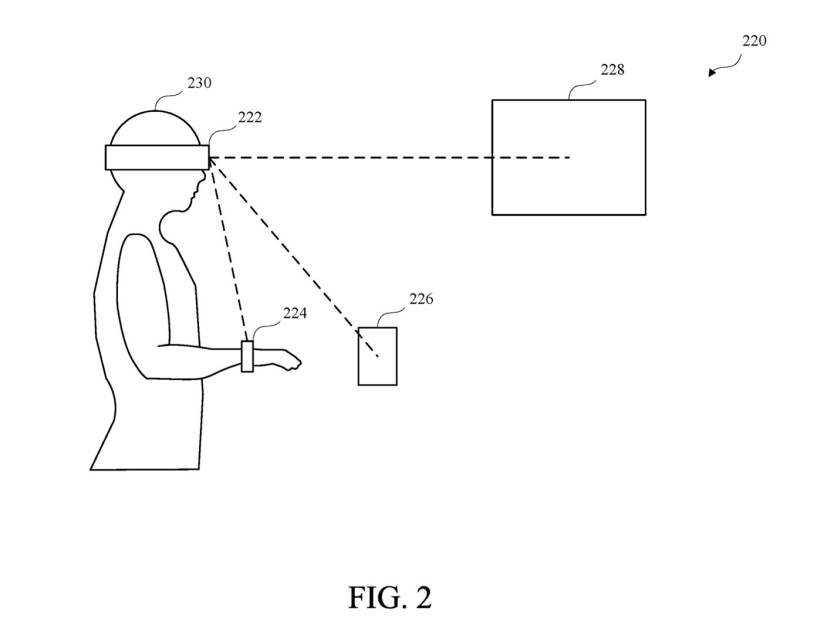- A new Apple patent describes a technology for augmented reality glasses that would allow the head-mounted display to authenticate the wearer into any nearby Apple devices that he or she might want to use.
- The smart glasses would interpret contextual data, and determine the user’s intention to access a function on a device that’s locked, and unlock that device accordingly.
- The technology would allow Apple to offer customers instant, continuous authentication for all their devices, further improving user experience.
When Face ID arrived, I could not be more excited about the sophisticated unlocking technology that Apple packed inside the iPhone X. I said at the time that Face ID would be ubiquitous in Apple’s future lineup of products, providing fast, instant, perpetual authentication, whether you use an iPhone, iPad, Mac, and other gadgets that might pack Face ID components. We’re not quite there yet, but Face ID has grown tremendously since then. Face ID is even faster since the first version and even easier to use. It now works on the iPad Pro, and most iPhones that Apple sells come with Face ID notches. Face ID also works with any password-protected app and service, delivering fast, passive, secure authentication. Mac support might be coming at some point in the very near future, at which point users entrenched in Apple’s universe of products will have an even simpler authentication experience. Rather than using a password or Touch ID on a Mac, the simple fact that you’re looking at the screen could be enough to unlock all the apps you need.
It turns out that Apple is indeed interested in offering ways for Apple device users to unlock all the nearby devices with a single gadget. And that gadget might be a head-mounted device that we’ve been informally referring to as Apple AR glasses.
Augmented reality is a huge interest for Apple, and the company is developing its own smart glasses. A variety of rumors, including one that dropped just a few days ago, said that Apple is nearing the first AR glass model launch. On top of that, several patents have shown Apple is actively studying AR glass technology.
The latest patent was filed in mid-April 2019, with the USPTO awarding it to Apple this week. Patent number 10,893,412 is called Authenticated device assisted user authentication, describing technology that would allow a smart glass user to unlock all the other nearby Apple devices.
The patent doesn’t mention the concept of smart glasses or Apple Glasses but calls the gadget a “head-mounted device.” The document also explains that said head-mounted device could offer augmented reality or mixed reality features.
Apple explains in the documentation that the purpose of allowing a device to unlock nearby gadgets can lead to a better user experience, as the user would not have to unlock each device separately.
Many electronic devices restrict access to various features based on authentication of the identity of the user. When multiple devices are used concurrently, procedures for unlocking each device individually can delay user access and reduce the quality of the user experience.
Consider the current Apple experience. If you have an iPhone, iPad, or Mac nearby, you’ll have to unlock each one of them separately before using most of their features. Locking each device after use is recommended, as that’s how you encrypt the gadget and protect your data. But each separate use will require another unlock. That’s why Face ID could be so great on Macs, as it could speed up unlocking procedures significantly.

The Apple AR glasses could take matters a step further. The smart glasses would have algorithms that would determine whether the user wants to access a feature on a nearby device that’s only available after that device is unlocked, and automatically authenticate the user. In practice, the glasses could tell when you pick up an iPad or iPhone with the intent of unlocking the screen, or whether you want to use a Mac, and then unlock those devices.
Apple proposes various ways of detecting the user’s intent to access other devices (emphasis ours):
The method includes performing, by the authenticated device, an intent determination for the user with respect to the restricted-access function of the proximate device, wherein performing the intent determination includes performing the intent determination based on at least one of an identified spatial orientation of the proximate device with respect to the user, a temporal duration corresponding to the identified spatial orientation of the proximate device with respect to the user, a voice command expressed by the user and detected by the authenticated device, a body-motion-gesture command expressed by the user and detected by the authenticated device, an eye-motion-gesture command expressed by the user and detected by the authenticated device, or motion data indicating motion of the authenticated device with respect to the proximate device.
It’s unclear how users would authenticate themselves on the head-mounted device, but the patent explains the head-mounted display might incorporate sensors capable of measuring biometric data:
The head-mounted wearable device 222 may be operable to verify the identity of the user 230 and may identify the user 230 as an authenticated user. For example, the head-mounted wearable device 222 may include one or more sensors for verifying an identity of the user 230, such as biometric sensors.
If this technology ever sees the light of day, it’s likely the smart glasses will authenticate the user until they’re taken off, much like the Apple Watch works. As with other exciting Apple technologies described in patents, there’s no telling when and if this one will be used in real life. But having a sleek pair of AR glasses unlock all my Apple devices whenever I need to use one of them is certainly something to look forward to.








